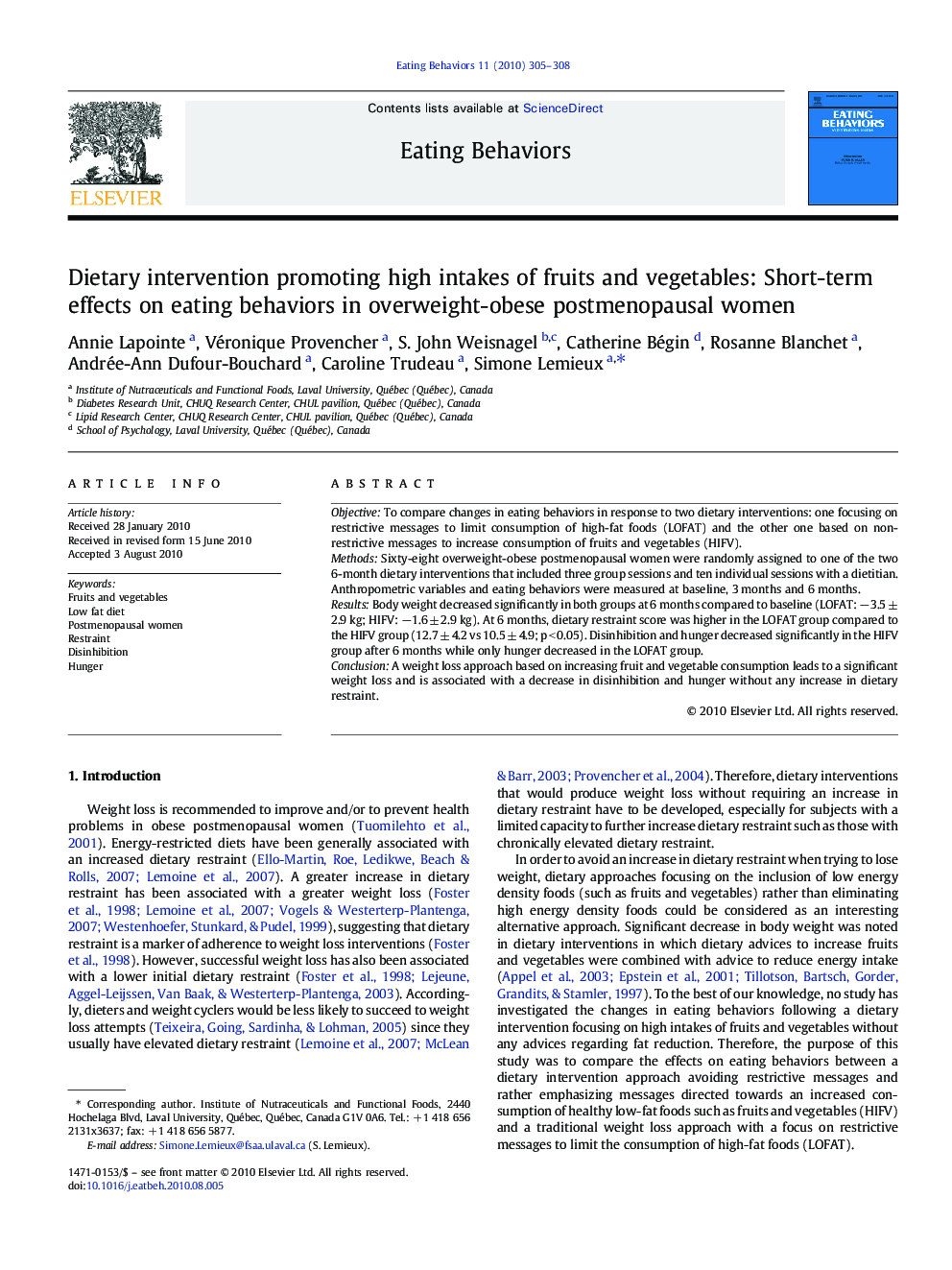| کد مقاله | کد نشریه | سال انتشار | مقاله انگلیسی | نسخه تمام متن |
|---|---|---|---|---|
| 906771 | 917020 | 2010 | 4 صفحه PDF | دانلود رایگان |

ObjectiveTo compare changes in eating behaviors in response to two dietary interventions: one focusing on restrictive messages to limit consumption of high-fat foods (LOFAT) and the other one based on non-restrictive messages to increase consumption of fruits and vegetables (HIFV).MethodsSixty-eight overweight-obese postmenopausal women were randomly assigned to one of the two 6-month dietary interventions that included three group sessions and ten individual sessions with a dietitian. Anthropometric variables and eating behaviors were measured at baseline, 3 months and 6 months.ResultsBody weight decreased significantly in both groups at 6 months compared to baseline (LOFAT: −3.5 ± 2.9 kg; HIFV: −1.6 ± 2.9 kg). At 6 months, dietary restraint score was higher in the LOFAT group compared to the HIFV group (12.7 ± 4.2 vs 10.5 ± 4.9; p < 0.05). Disinhibition and hunger decreased significantly in the HIFV group after 6 months while only hunger decreased in the LOFAT group.ConclusionA weight loss approach based on increasing fruit and vegetable consumption leads to a significant weight loss and is associated with a decrease in disinhibition and hunger without any increase in dietary restraint.
Research highlights
► Increasing fruit and vegetable intakes leads to weight loss after 6 months.
► Decreasing consumption of high-fat foods leads to weight loss after 6 months.
► Increasing fruit and vegetable intakes decreased desinhibition and hunger.
► Increasing fruit and vegetable intakes had no effect on dietary restraint.
► Decreasing consumption of high-fat foods increased dietary restraint.
Journal: Eating Behaviors - Volume 11, Issue 4, December 2010, Pages 305–308